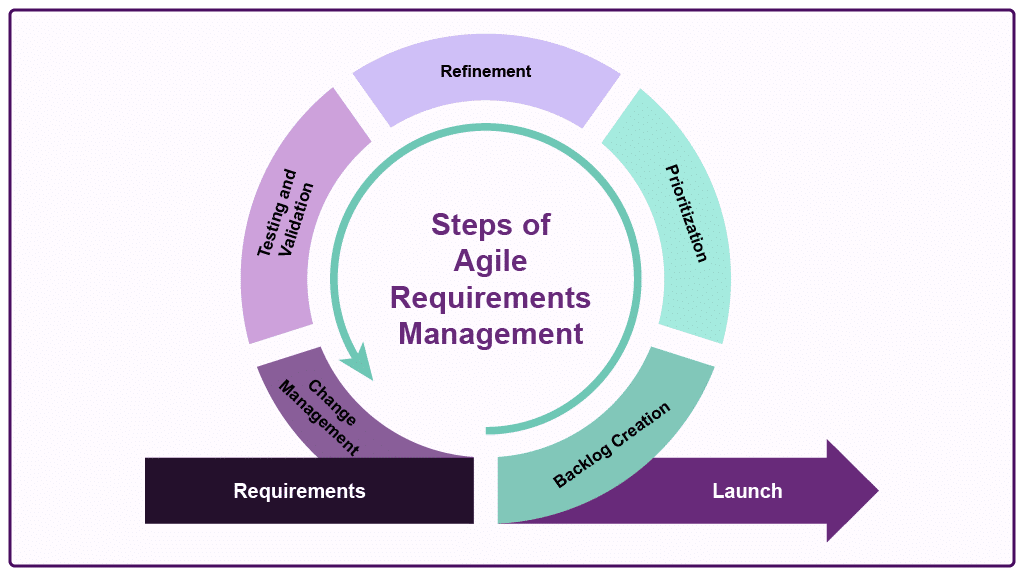
Mastering Agile Requirements Management: Best Practices and Tools
- Arunabh Satpathy
- January 29, 2025
- 8 minutes
Agile requirements management is the process of defining, prioritizing, and evolving requirements iteratively throughout a project. Unlike traditional approaches, Agile uses a flexible structure or framework within which you can implement and execute Agile methodologies and tools like Scrum and Lean.
Agile methodologies have grown to become the cornerstone of successful project management, especially in software development. Agile projects have been shown to be nearly 1.5X more successful than waterfall projects.
This guide explores Agile requirements management, its core principles, lifecycle, benefits of specialized tools, and best practices to master this critical aspect of Agile development.
Table of Contents
Related Articles
1. What is Agile Requirements Management? What are its key principles?
Agile requirements management focuses on adaptability, ongoing stakeholder collaboration, and iterative refinement. It is part of the practice of requirements management as a whole. To understand requirements management and related topics like AI requirements management, best practices for requirements management, and more, check out our Requirements Management Master Guide.
It empowers teams to respond quickly to evolving business needs while keeping projects on track and delivering customer-focused results. Here’s how it is different from traditional approaches like Waterfall:
Aspect | Traditional Requirements Management | Agile Requirements Management |
|---|---|---|
Approach | Linear, fixed at the start | Iterative, evolves with each sprint |
Focus | Comprehensive documentation upfront | Minimal viable documentation |
Stakeholder Involvement | Limited to initial phases | Continuous throughout the lifecycle |
Flexibility | Resistant to change | Welcomes change as part of improvement |
Delivery | One-time, at the end of the project | Incremental, frequent deliveries |
Agile works best when it uses a requirements backlog, an editable list of initiatives, epics, user stories, and tasks. This backlog ensures that business goals align with development efforts.
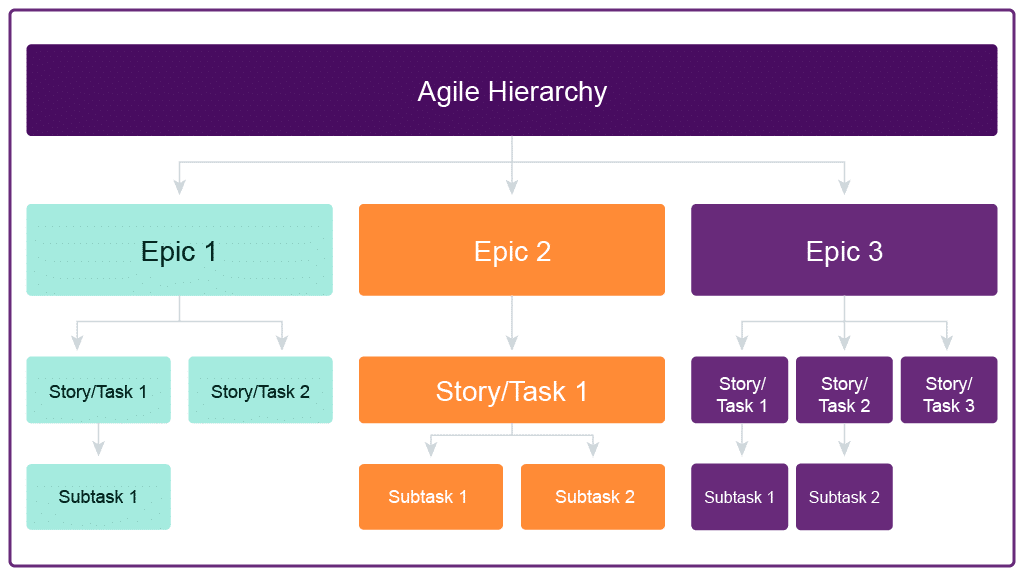
The Agile methodology follows the principles below:
- Stakeholder Collaboration and Ownership: Engage stakeholders early and often to align requirements with business goals and user needs. You can ensure this happens with regular backlog refinement sessions to align requirements and even establish a new baseline if necessary. You can even have sprint reviews – an informal meeting held at the end of a sprint to gather stakeholder feedback.
- Prioritizing Requirements Based on Business Value: Prioritization helps your team focus on delivering the features that provide the highest value to the business and users. You can use different prioritization methods like SWOT and INVEST and you can use AI DevOps tools to achieve this. Here is an example below:
- Embracing Iterative Development: Market conditions, stakeholder needs, and company goals can change the longer a project lifecycle goes on. Building robust change management, baselining, and implementing impact assessment processes is crucial to keeping your modified project on track.
- Minimal Viable Documentation: Since Agile focuses on speed, lean documentation that conveys necessary information without overcomplication is necessary. Lean documentation may include:
- User Stories: Brief feature descriptions from the user perspective that follow an “As a [user role], I want [action] so that [benefit]” structure. User stories must include acceptance criteria.
- Product Requirements Documents (PRDs): Concise documents defining a product’s purpose, features, functionality, and behavior, serving as a guide for business and technical teams.
- Visual Aids: Use visual aids like wireframes and flow diagrams to communicate effectively.
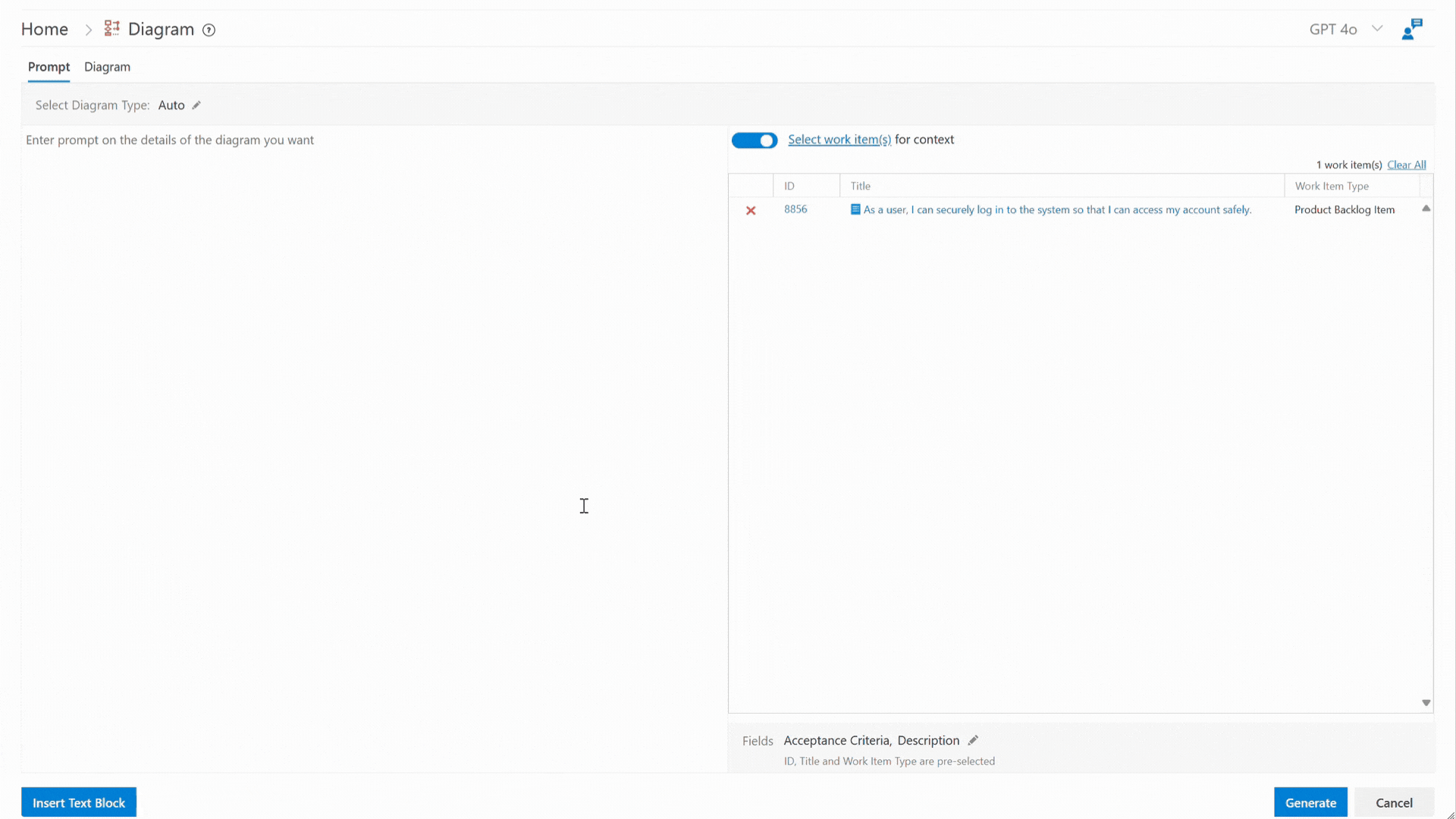
The net result of embracing these principles is a competitive organization that outranks its competitors. According to Michael Hugos, Agile Systems Architect, “Agility means that you are faster than your competition. Agile timeframes are measured in weeks and months, not years.”
2. The Agile Requirements Management Lifecycle
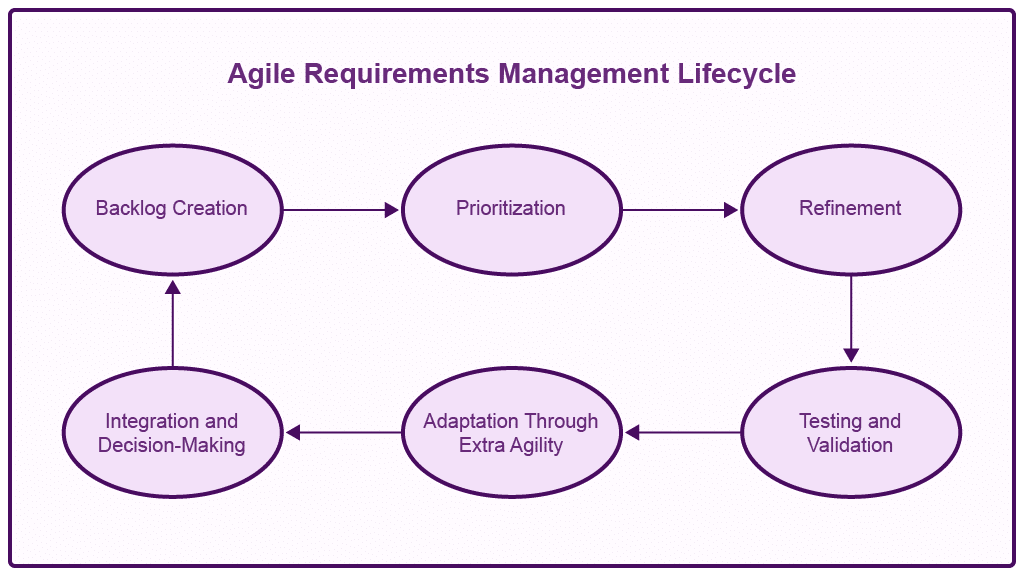
Agile requirements management is driven by speed, flexibility, and continuous iteration. The lifecycle incorporates these principles, ensuring teams can adapt to evolving needs while maintaining alignment with stakeholders. Here’s how the process unfolds:
i. Backlog Creation
Agile requirements management begins with elicitation of user stories, diagrams, and models. Stakeholder collaboration gives teams a way to collect requirements from everyone affected by a project. You can use methods like brainstorming sessions to elicit requirements and encourage teams to explore what-if scenarios.
ii. Prioritization
After elicitation, requirements should be prioritized based on business value, feasibility, and more. This step ensures better resource allocation, faster time-to-market, and improved stakeholder satisfaction.
Prioritization methods include MoSCoW, Kano, SWOT, RICE Scoring, and Value vs. Effort. To speed up your Agile methodology even more, you can use AI tools like Copilot4DevOps, which can rank your requirements based on MoSCoW.
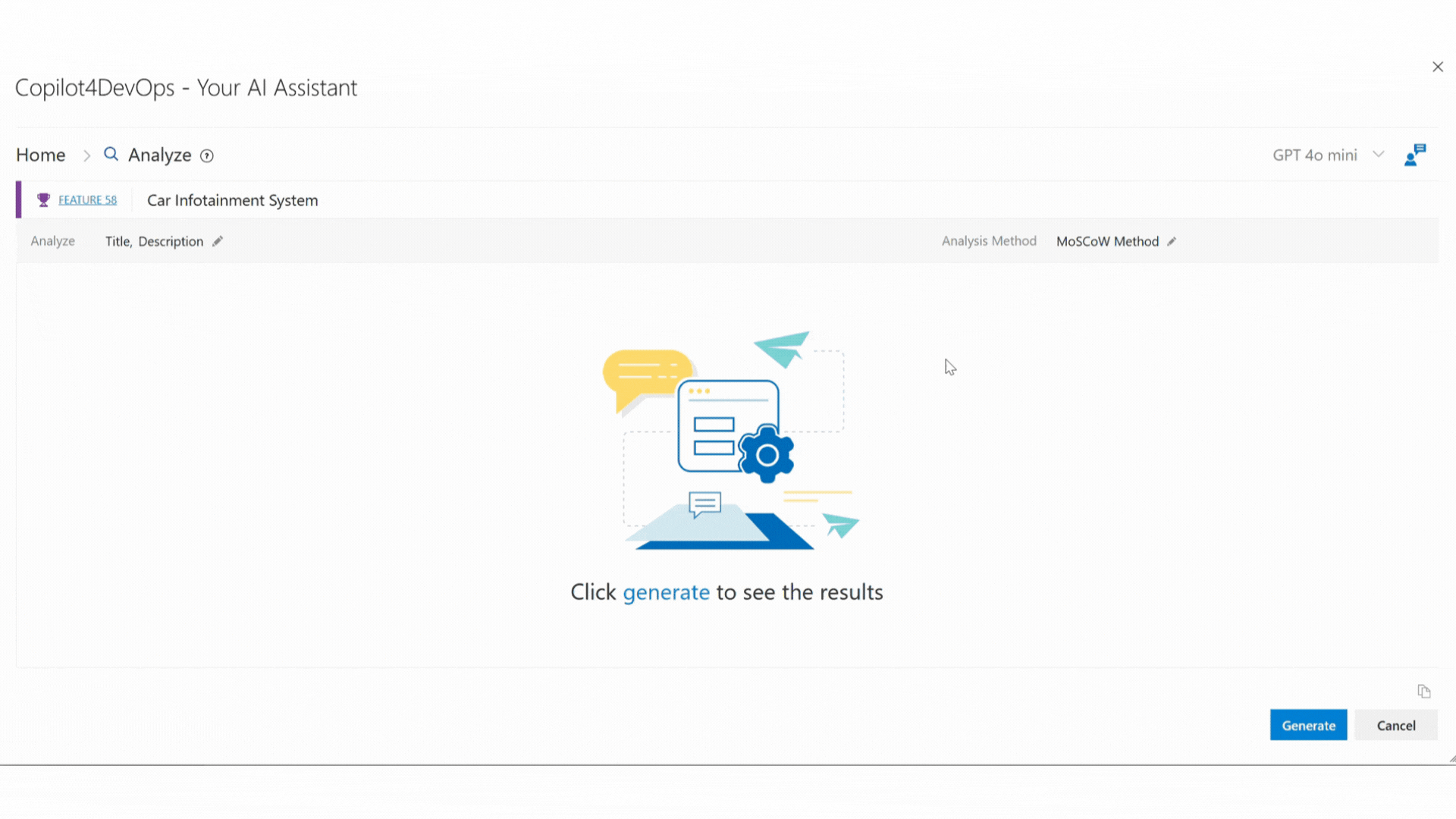
iii. Refinement
Agile is defined by its dynamism and requires regular refinement to update priorities, clarify user stories, and address new insights. Use methods like backlog refinement and sprint reviews to stay on top of your evolving project needs.
iv. Testing and Validation
In Agile, testing isn’t a discrete step—it’s woven throughout the lifecycle. Agile requirements management integrates automated testing and validation into development to align requirements and deliverables. You can use AI to create test cases and test scripts.
Rapid requirements review with the appropriate tools also helps speed up your Agile requirements management cycle. This is especially important regarding E-signature approvals for CFR Part 11 regulations.

v. Change Control
Robust change management supports integration, simplifying updates across requirements and ensuring teams remain aligned. Teams can use impact assessment and change management tools to keep the cycle working. Agile requirements management prioritizes interaction over rigid processes, enabling iterative decision-making that keeps pace with project demands.
By embracing this lifecycle, teams can maintain agility while delivering value-driven, customer-centric solutions. Agile requirements management ensures success in a constantly evolving landscape.
3. Agile Requirements Management Tools
The best way to benefit from the Agile methodology is to use requirements management tools that streamline Agile workflows. Here are some of their benefits.
- Enhanced Collaboration: Using Agile requirements management tools, you can bring all your stakeholders onto a single platform for better communication. Using tools that allow you to speed up your review cycles, create brand new baselines, or generate diagrams with one click, your stakeholders can always be a part of your evolving project.
- End-to-End Traceability: Traceability in Agile helps a team maintain a clear line from requirements to delivery, which leads to higher team performance and fewer errors. A study showed that developers using traceability created on average 50% more correct solutions. So Agile tools that offer multiple traceability matrices are better suited for teams developing software.
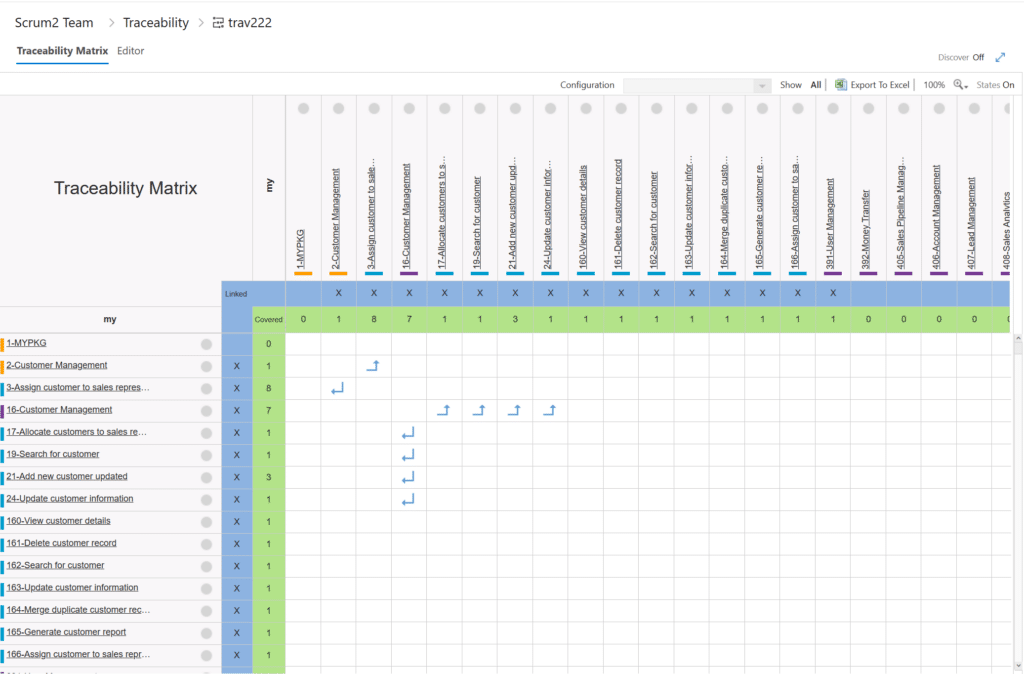
- Enhanced Collaboration: Research shows that developers using Agile methods performed on average 24% faster on a given task. Agile tools can help speed up these time and cost savings by automating repetitive tasks which frees teams to focus on value-driven work.
4. Modern Requirements4DevOps: The Ultimate Agile Tool
Modern Requirements4DevOps is an Agile requirements management tool natively integrated with Azure DevOps to enhance project efficiency and collaboration. It is a multiple award-winning tool, achieving an overall Composite Score of 8.9 out of 10 and a Net Emotional Footprint score of +98 for Software Reviews for 2024. Some of the key features are:
- Seamless Azure DevOps Integration: Modern Requirements4DevOps operates within Azure DevOps, ensuring unified workflows for requirements, testing, and development.
- End-to-End Traceability: The platform provides robust traceability across all project stages, simplifying audits and compliance reporting with two separate traceability matrices on offer.
- Smart Docs: It’s an MS Office-like documentation tool to document, create, and edit requirements within Azure DevOps.
- Document Management System: It allows for seamless uploading, downloading, and foldering of documents within Azure DevOps.
- Version/Variant Management: Track and manage versions of work items and variants of product work items.
- Copilot4DevOps: Game-changing AI requirements management tool that allows teams to create requirements, Gherkin, test scripts, and pseudocode from existing work item data, analyze requirements for quality, and modify system prompts with detailed custom instructions.
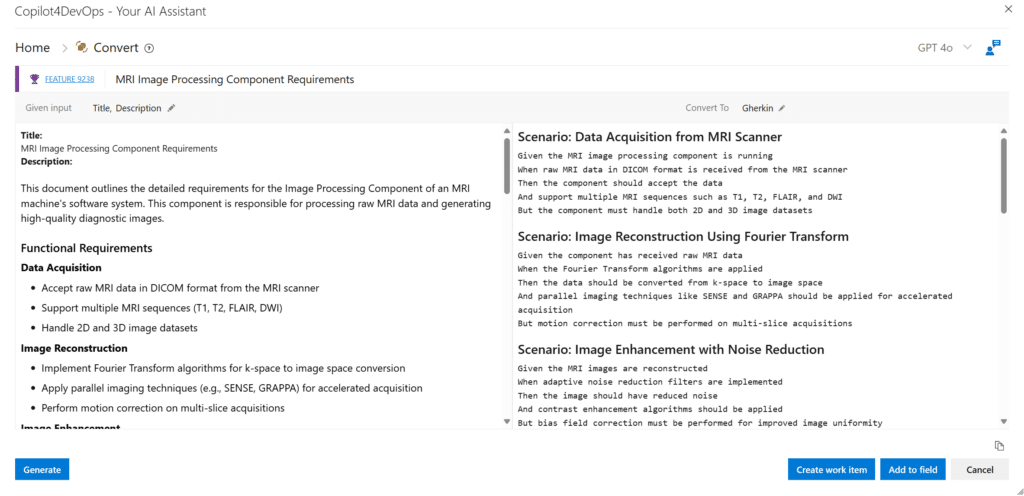
5. Best Practices for Agile Requirements Management
Adopting effective practices is crucial for managing Agile requirements successfully. Below are actionable strategies, presented in a structured format for easy implementation:
- Collaborate Closely with Stakeholders: Conduct regular demos to showcase progress and schedule feedback sessions to align goals and refine requirements. Foster open communication through collaborative tools to ensure transparency and mutual understanding.
- Prioritize Business Value in Every Iteration: Reassess and rank priorities at the start of each sprint to focus on delivering high impact features first. This ensures that every iteration aligns with business goals and customer needs.
- Keep Documentation Lean but Clear: Use concise documentation supplemented with visuals to convey ideas effectively. Avoid lengthy reports by creating actionable user stories and summaries that are easily understandable by all stakeholders.
- Leverage Visual Modeling: Integrate flowcharts, wireframes, and journey maps to provide clarity and highlight relationships between features and dependencies. Visual modeling enhances team understanding and facilitates better decision-making.
- Adopt Tools Like Modern Requirements4DevOps: Streamline workflows, enhance traceability, and simplify audits using integrated solutions like Modern Requirements4DevOps. Centralized tools align teams and improve efficiency.These best practices ensure your Agile team stays aligned, adaptable, and customer-focused while reducing risk and inefficiencies.
6. FAQs Section
- What is Agile requirements management, and how is it different from traditional methods?
Agile requirements management emphasizes adaptability, collaboration, and iterative refinement, contrasting with traditional static documentation and rigid upfront planning. - How does AI enhance Agile requirements management?
AI streamlines Agile workflows by automating tasks like traceability, test creation, and gap analysis, improving speed and accuracy. - Is Modern Requirements4DevOps suitable for small Agile teams, or just enterprises?
Modern Requirements4DevOps’ scalability supports both small Agile teams and enterprise-level projects, ensuring flexibility and efficiency across diverse team sizes.
7. Driving Success with Agile Requirements Management
Agile requirements management ensures adaptability, collaboration, and efficiency. By prioritizing value, involving stakeholders, and maintaining lean documentation, teams deliver customer-focused results. Tools like Modern Requirements4DevOps enhance traceability, productivity, and compliance through Azure DevOps integration and AI-driven features, enabling teams to meet evolving needs while minimizing risks and fostering continuous improvement.

